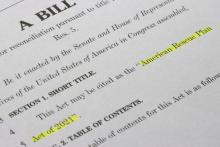Our Big List of American Rescue Plan Community Broadband Projects Hits 250
It’s been nine months since we launched our Big List of American Rescue Plan Act (ARPA) Community Broadband Projects, tracking what communities are doing with the various pots of federal money intended to go towards solving local broadband challenges. Since then, we’ve recorded 250 community projects and 27 states which have announced significant broadband grant programs or disbursement for new infrastructure projects. Here we highlight some of the community projects we’re really excited about, including those that have decided to build their own networks and those building on existing projects, as well as those using ARPA dollars for open access networks, affordable connectivity, or Internet access for students. We also discuss some examples of solutions we believe are less permanent, forward-thinking, or likely to result in long-term success, including the distribution of hotspots and the allocation of funds to monopoly providers.
What We’re Excited About: Community-Owned Networks and Open Access
Fortunately, we’re seeing a number of communities approve plans to spend their Rescue Plan dollars on building their own municipal networks. In Lexington, Tennessee (population 8,000), the city is collaborating with Lexington Electric to bring broadband to the community. An ARPA grant is expected to cover about $20 million of the total $50 million price tag, and the city will issue bonds for the rest. If this grant is received, Henderson County (28,000) – where Lexington is located – has agreed to a 10 percent match (from $300,000 to $500,000).



